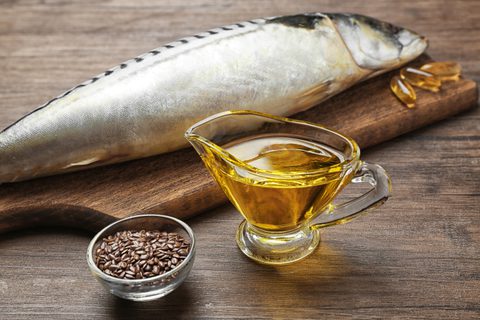

Using Lipases to Produce Nutritional Food Ingredients
Nutritional food ingredients take many shapes and forms, each delivering its own unique benefits to consumers. Lipases can be used to selectively hydrolyse fatty acids to improve the nutritional value of oil and fat substrates.
Health and well-being has been a notable market trend over the last five years, and it doesn’t look to be slowing down any time soon. An increased awareness of the potential health benefits that can be achieved from making lifestyle and dietary changes has fuelled the growth of “healthy” food and beverage products. As the nutrition market advances and expands, food manufacturers are looking to develop new functional food ingredients and dietary supplements that are targeted at lifelong nutrition. Personalised nutrition aims to meet the varying nutritional needs of individuals based on age and lifestyle, these can be seen in functional foods targeting sports nutrition, elderly nutrition and the nutraceutical markets.
Nutritional food ingredients take many shapes and forms, each delivering its own unique benefits to consumers. Foods fortified with protein have a significant presence in the market, with slow releasing casein protein helping to treat malnutrition and sarcopenia in the elderly, or whey protein, which can be absorbed more quickly, and therefore have greater benefits to individuals looking to build and repair muscle following physical activity. Digestive products enhanced with “friendly bacteria” is another area receiving considerable focus with the development of foods enriched with prebiotics that promote the growth of beneficial microorganisms in the gut microbiome.
There are few functional foods that have medically approved health claims backing their benefits, with the majority’s benefits associated more with a scientific theoretical basis of providing benefits but not clinically proven. One nutritional food ingredient that has been a hot topic in the market for many years are omega-3 fats. In 2019 the FDA announced “newly qualified claims for (eicosapentaenoic acid (EPA) and docosahexaenoic (DHA)) omega-3 consumption and the benefits of reducing the risk of hypertension and coronary heart disease”1. Whilst there are recommended dietary guidelines for the consumption of omega-3 and polyunsaturated fatty acid (PUFA) enriched foods such as oily fish, eggs and nuts and seeds, there are many individuals that increase their omega-3 intake through supplements. As the market grows manufacturers have begun innovating in this space to develop enriched supplements. Enzymes can be used in various ways to alter the physical properties of fats and oils providing functionality for use in many food applications. Lipases can be used to selectively hydrolyse fatty acids other than EPA and DHA from the ester bond to produce PUFAs-rich oils.
In addition to the advantages of selective hydrolysis of fatty acids, lipases play a key role in producing healthy oils through esterification reactions. Interesterification reactions rearrange the positions of fatty acids within triacylglycerols. Rearranging fatty acid positions on the glycerol molecule to produce structured lipids / dietary triglycerides can improve the bioavailability of particular fatty acids, meaning there is increased potential for the absorption of nutritionally beneficial fatty acids. Restructuring of fatty acid positional distribution on the glycerol backbone can be carried out by enzymatic and chemical processes. Lipases provide a natural clean label solution to producing structured lipids by detaching the medium-chain fatty acids (MCFAs) and long-chain fatty acids (LCFAs) that are attached to the glycerol and re-joining them in different positions back on to the same glycerol backbone. Being able to position long chain fatty acids in the second position, and medium chain fatty acids on the first and third position on the glycerol backbone, combines the nutritional benefits of both LCFA and MCFA on the same lipid molecule.
Due to the nutritional absorption benefits, structured lipids that resemble the same triglyceride structure as human milk fat are often used as a functional food ingredient in infant formulas2. Safety is paramount when producing compounds for infant formula and many producers are looking to move away from chemical esterification methods that randomly rearrange fatty acids, to an enzymatic process which is much more precise and controlled.
References
1 https://www.fda.gov/food/cfsan...